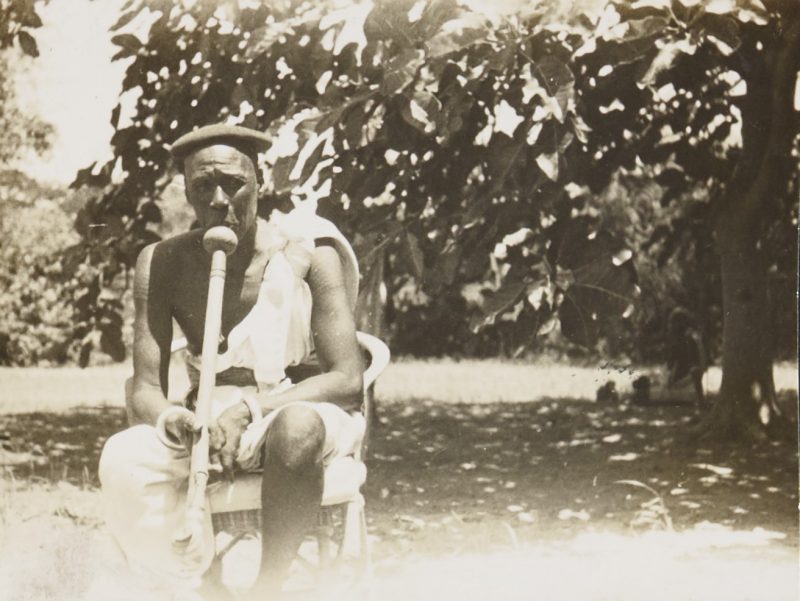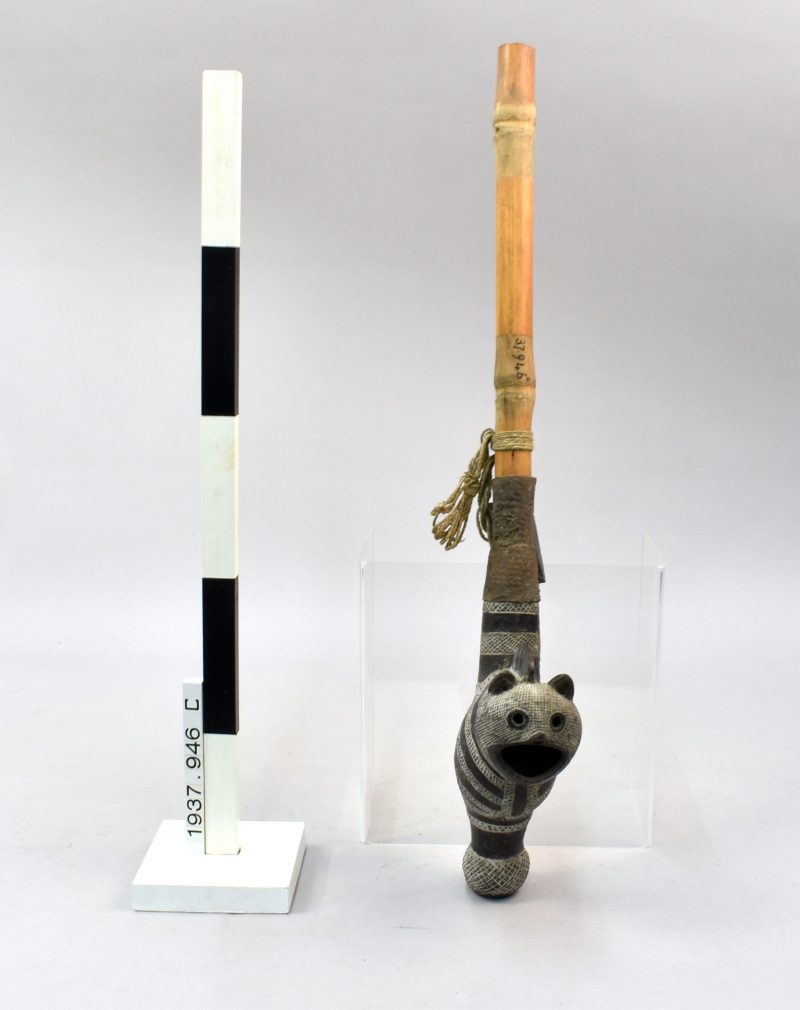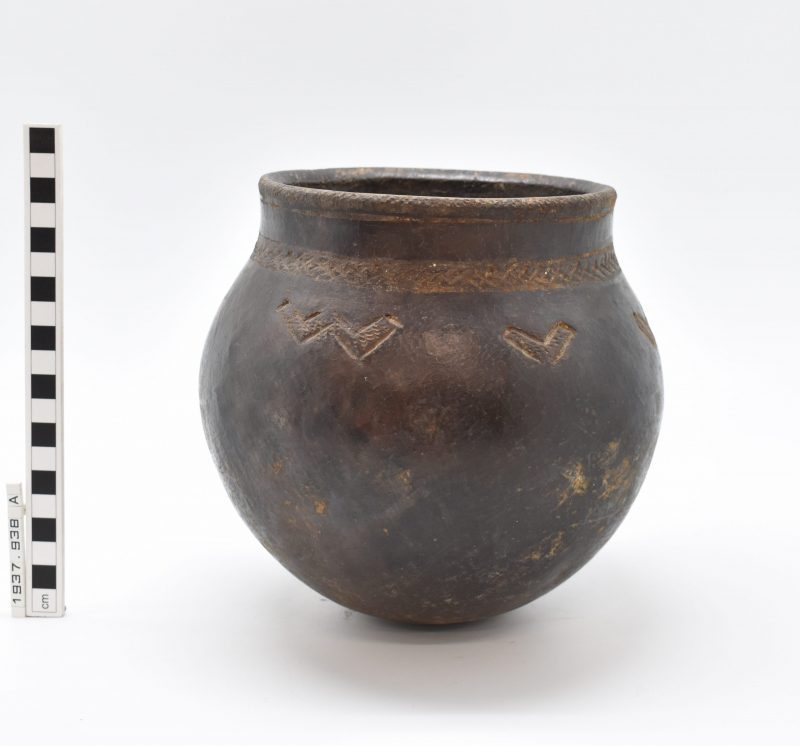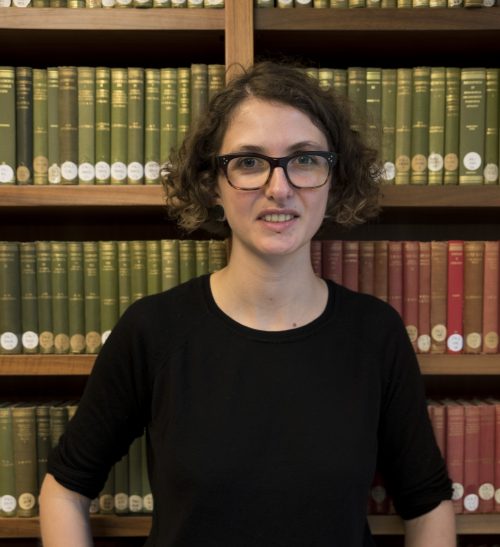Visiting researcher Zoe Cormack talks about her research on the colonial histories of collections at Cambridge, the previous owners of African objects now stored at the Museum of Archaeology and Anthropology, and the new questions and connections this research is bringing to light.
As a visiting researcher in the Museum of Archaeology and Anthropology (MAA) in Cambridge, I am investigating a deceptively simple set of questions: how did these objects get here? Who were their original owners and under what circumstances did they part from their possessions?
Most African objects at MAA were removed from their place of origin during colonial rule. In many cases, there is little information about their previous owners or the context of their removal. But various different sources – the Museum’s catalogue, the Museum’s archive and external archives which hold the private papers of some MAA donors – can help to better understand their histories. The ongoing Stores Move project has also given me the opportunity to engage with the objects themselves.
One of my case studies has been a group of objects donated by Paul Philip Howell in 1937. The accession book simply states that they were ‘collected by the donor among the Shilluk of Upper Nile Province’ – a part of what is now South Sudan. I am interested in how research can build on quite sparse catalogue entries, such as this, to enhance our understanding of collections and their provenance. The work I have just completed has much to tell us about what this kind of investigation can – and cannot – reveal.
The first question is often, who was the donor and how might they have assembled the objects?
Howell was a student at Trinity College. He was admitted in 1935 and read Anthropology and History. His supervisor was the anthropologist Jack Driberg, who had a colourful previous career as a colonial administrator in the Government of Sudan. Howell then went on to work in the Sudan Government, including a significant posting in Upper Nile Province. While an administrator, he studied for a DPhil in Anthropology at Oxford University with E. E. Evans Pritchard on customary law in Upper Nile. After Sudan’s independence in 1955, Howell worked in international development, the Foreign Office and then returned to Cambridge where he held positions including Director of Development Studies and Chair of the Faculty of Archaeology and Anthropology from 1976-1982.
My first thoughts were that Howell probably acquired these objects while he was working as an administrator in Upper Nile Province. But Howell joined the Sudan service in 1938, a year after his donation to MAA. More digging revealed that Howell took a separate trip to Sudan in 1937, funded by Trinity college, as part of his undergraduate studies. The objects were assembled during this trip and I managed to track down related documentation (including a report and about 100 photographs) among Howell’s personal papers in The Sudan Archive and Durham University (a very useful resource of studying colonial era Sudan).
This was an important find because the trip report offers much more context than is available in MAA’s accession book. It reveals that Howell was based for two months in a town called Kodok, from where he travelled to other smaller villages and hamlets. The town of Kodok, also known as Fashoda, is famous in imperial history as the site of a late nineteenth century territorial dispute between Britain and France. It is also an important historical and spiritual centre for Shilluk people (or Collo, as they call themselves) because it is the residence of the Reth or ‘Divine King’. The ‘Divine Kingdom’ of Shilluk/Collo people is well known in Anthropology and ceremonies of the Reth have been extensively discussed and documented by foreign and South Sudanese researchers. This seems to have been one of the reasons behind Howell’s decision to travel to Kodok. He stayed with his uncle (who was the Assistant District Commissioner at Kodok) and made several trips to meet and interview the Reth.
The annotations on Howell’s photographs, also at Durham University’s Sudan Archive, provide the names of some of the places he visited: Fanyikang, Debalo Yom, Achop, Yom Dhok Alal, Niayok, Wadhjang, Faalo, Akalan and Abiyop. We can find a little more information on these settlements. In a 1941 publication for example, Howell describes the village of Yom Dhok Alal in detail. He records the name of people living there at the time. But he doesn’t say which, if any, objects at MAA he acquired in Yom Dhok Alal. We can’t precisely link any of the objects now in MAA to these locations, but we’ve come a lot further: from knowing only that the objects came from ‘Upper Nile Province’ (a huge area, encompassing about a third of South Sudan) to the names of individual villages where they may have been acquired.
What about the people with whom he interacted and from whom he obtained objects?
Again, the trip report contains some important fragments. On 28th July 1937, Howell writes that he was given an ebony throwing stick by the Reth, Fafiti Wad Yor, who apparently took pity on the poorly equipped Howell:
‘He [the Reth] presented me with a throwing stick made of ebony which pleased me much. The Shilluk think you are not dressed properly without a stick’
There is an ebony throwing stick among the objects that Howell donated to MAA, but nothing to confirm it was the one given to him by Fafiti Wad Yor. I think though, that it is very likely to be the same, because Howell’s description from MAA’s card catalogue is very similar. We know that Howell met the Reth several times, he even took a photograph of him smoking a pipe.


Another example comes from 2 August 1937, Howell visited an old man, who he wrote had been enslaved by a previous Reth (although there are no further details about the circumstances). Howell gave this man a bag of grain to make two pipes. It is here that we learn that accompanying Howell was a clerk called Oduk who helped translate and mediate the exchange. Again, there is no further information about Oduk, but we can image that he, or other intermediaries would have been crucial in facilitating Howell’s work assembling objects.
‘I have just walked out to a small village some way beyond Kodok. With me was Odok, who is government clerk and who speaks reasonable English. At this village lives a very old man who was at one time Reth Yor’s slave (the Reth before last)…the old man is having two Shilluk pipes made for me, in return for which I am sending him a big bag of durra.’
Howell donated four pipes, but again there is nothing to indicate which, if any, he acquired through this man.

Later the same day, Howell mentions commissioning pots in Kodok from the aunt of a man called Lual – who may have been a government employee.
‘Lual’s mother (or rather his Mother’s sister) is a tremendous personality – very sprightly and amusing and mad for dancing, although she must be at least 60. Very motherly to us and vivacious at the same time…She is also a potter and is making me some pots from clay, gathered by Nuba prisoners.’
Despite describing her personality, Howell doesn’t record her name. Although there are five clay pots in the Howell donation at MAA, there is no firm indication if any of these were made by the charismatic potter he describes in his report.

These hints of more personal stories bring to light connections between museums and colonialism and varied relationships between anthropology at Cambridge, MAA and colonial administration in Sudan. Many objects at MAA were donated by colonial officials who assembled collections during their administrative work (John Anthony Arkell who amassed hundreds of objects while deputy governor of Darfur in the 1930s, is one prominent example). Howell’s career clearly shows how, for someone with the right connections and inclinations, anthropology at Cambridge was a path into the administration. The combined experience of study, travel and collecting could be foundational: this trip, he wrote, ‘undoubtedly influenced my subsequent choice of career’.
What about the people who made and used these objects?
Research on Howell’s donation illustrates the exciting possibility of research to fill gaps. By putting together different pieces of evidence we can gradually reveal the people who previously made, used and valued the objects now at MAA. The ebony throwing stick was likely given to Howell by Reth Fafiti Wad Yor, and we can now include this information in the database. But this is also frustrating and challenging work – because important details are often partial or absent. For example, we can only now speculate about the contribution of Oduk, as translator and interlocutor. These are people and stories that have often been deliberately occluded from the museum’s records, and we now need to step sideways, away from the bare details of the catalogue to open-up different contexts and the deeper histories of objects.
You can find out more about the Sudan and South Sudan collections, and see the work we are doing to make these artefacts and their histories visible at https://collections.maa.cam.ac.uk.







